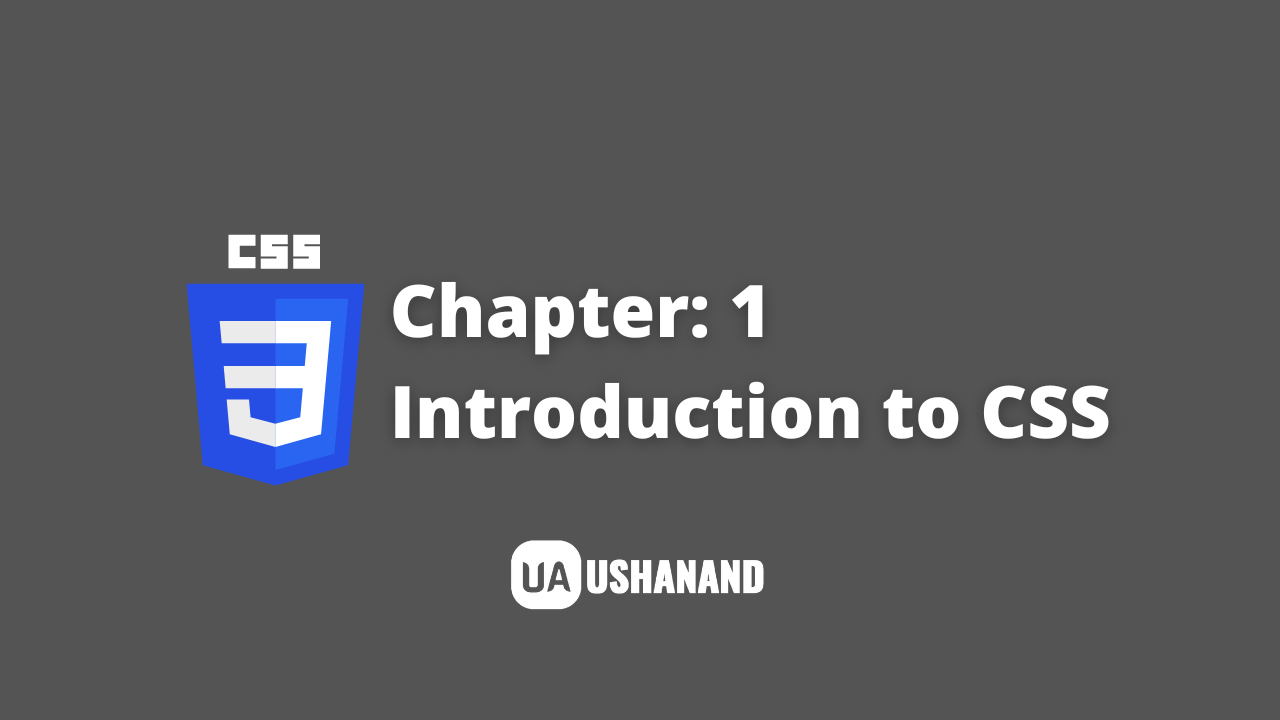Introduction to CSS: Welcome to Ushanand Infotech Solutions, Now we will discuss about Introduction to CSS. Cascading style sheets are a style sheet language used to describe the presentation of a document written in a markup language such as HTML. In this articles we will start learning Introduction to CSS. CSS is the cornerstone technology of the World Wide Web with HTML and JavaScript. Please Read & Learn All Articles of CSS Tutorial Series.
Introduction to CSS
Cascading style sheets is known as CSS. CSS are a simple design language intended to simplify the process of providing web pages.
CSS handles the look and feel of a web page. Using CSS, you can choose the color of the text, the style of the fonts, the spacing between paragraphs, how the columns take shape and which background images or colors are used, layout design, various tools, and screen sizes. Changes in performance can be controlled. As well as many other effects.
The CSS markup language is combined with HTML or XHTML. CSS is easy to learn and understand. It provides powerful control over the presentation of an HTML document.
- CSS is for cascading style sheets.
- CSS describes how to display HTML elements on paper, screen, or other media.
- CSS can control the layout of many web pages simultaneously.
- External stylesheets are stored in CSS files.
Benefits of CSS
You can write CSS once and then reuse the same sheet on more than one HTML page. CSS saves time. You can define a style for each HTML element and apply it to as many web pages as you want.
- Pages load faster: If you’re using CSS, you don’t have to write HTML tag attributes every time. Just write a tag’s CSS rule and apply it to all events in that tag. So less code means faster download time.
- Easy Maintenance: To make a global change, simply change the style, and all elements in all web pages will be automatically updated.
- Improved HTML Styles: CSS has much more elaborate features than HTML, allowing you to give your HTML page a much better look than HTML features.
- Multiple Device Compatibility: Style sheets allow content to be adapted for more than one type of device. Using the same HTML document, different versions of the website can be presented on a PDA for printing and on cell phones or handheld devices.
- Global Web Standards: HTML features are now being deprecated and recommended for using CSS. So it is a good idea to start using CSS in all HTML pages to make it compatible for future browsers.
Who creates and maintains CSS?
CSS is created and maintained within the W3C through a group of people working CSS. The CSS working group creates a document called a specification. When a specification has been discussed and officially confirmed by W3C members, it becomes a recommendation.
The W3C has no control over the actual implementation of the language. Independent companies and organizations make that software. These ratified specifications are called recommendations.
Note: The World Wide Web Consortium or W3C is a group that makes recommendations about how the Internet works and how it should be developed.
CSS Version
The Cascading Style Sheet Level 1 (CSS1) came out of W3C in December 1996 as a recommendation. This version describes the CSS language as well as a simple visual formatting model for all HTML tags.
CSS2 became a recommendation for the W3C in May 1998 and was built on CSS1. This version adds support for media-specific style sheets e.g. Printers and aural tools, downloadable fonts, element positions and tables.
Also Visit: Best SEO Expert in India



